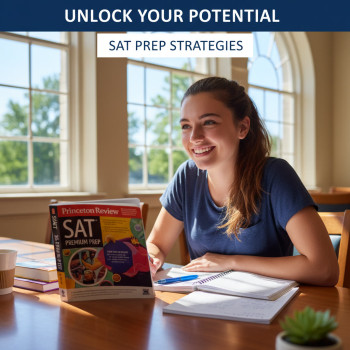Take a breath: the SAT is one step, not the finish line
You just finished (or have plans to finish) the Digital SAT — congratulations. Whether you felt like you aced it or you’re still processing the test experience, the next steps in the college application journey are where strategy, timing, and thoughtful storytelling come together. This guide walks students and parents through what happens after the SAT — in plain language, with real-world examples, and with practical next steps you can act on right away.

Overview: the big-picture milestones
The months after the SAT are usually about translating your test experience into action. Here are the core milestones most families will navigate:
- Understand and interpret your SAT score (and whether to send it).
- Refine your college list into reach, match, and safety schools.
- Complete application components (essays, recommendations, activities).
- Apply for financial aid and scholarships (FAFSA, CSS Profile, school forms).
- Submit applications by early or regular deadlines and track confirmations.
- Respond to offers and make your final college decision.
Think of the SAT as a map pin — it’s a useful data point that schools use, but admissions is holistic. Your essays, coursework, activities, recommendations, and how well you match a college’s mission also matter.
Step 1 — Interpreting your SAT score: what to do next
Know what your score means for you
A single SAT score shouldn’t cause a panic. Instead, view it as information. Colleges often publish the middle 50% score range for admitted students — that’s a helpful benchmark. If your score is within or above that range, fantastic. If it’s below, it’s still okay: many students with lower scores are admitted based on other strengths.
Decide whether you’ll retake the SAT
Consider retaking the test if:
- Your score is meaningfully below the target range for your dream schools.
- Your practice test trends show consistent improvement you haven’t yet captured on a test day.
- You can realistically improve with targeted study before application deadlines.
Also weigh the calendar: if deadlines (especially early action/decision) are near, a retake might not arrive in time to help that application cycle.
Step 2 — Build and refine your college list
Reach, match, safety: how many and why
A balanced list usually includes:
- 2–3 reach schools (ambitious, where admission is less likely)
- 3–4 match schools (realistic targets based on grades and scores)
- 1–2 safety schools (very likely to admit you and affordable)
Quality beats quantity. Applying to a handful of schools where you can present a strong, tailored application is smarter than firing off many generic ones.
Use multiple data points
Look at each college’s admitted student profile, academic programs, campus vibe, financial aid offerings, and outcomes like graduation and job placement. Visit campus if possible, or take virtual tours and attend information sessions. Conversations with current students — or a quick chat with a guidance counselor — often reveal details that numbers don’t.
Step 3 — Application types and timing
Early vs. regular — what to pick
Common application routes include Early Decision (binding), Early Action (nonbinding), Rolling Admission, and Regular Decision. Pick a route based on how sure you are about a school and whether you need financial aid comparisons before committing.
If you’re applying early decision, be confident about finances and fit because signing binds you to attend if admitted. Early Action is great for students who want early answers without committing.
Create a deadline calendar — and live by it
Use a spreadsheet with columns: school name, application portal (Common App, Coalition, or school portal), application type, deadline, essay prompts, required documents, recommendation due dates, and test-score submission preferences. Add reminders two weeks before each deadline for final checks.
Step 4 — The application components
The parts that matter most
Most applications include:
- Application form (Common App, Coalition, or school-specific)
- Personal essay and supplemental essays
- High school transcript
- Letters of recommendation
- Activity list or resume
- SAT/ACT scores if the college requires or recommends them
- Application fee or fee waiver request
Crafting essays that show, rather than tell
Admissions officers read thousands of essays. The standouts are specific, reflective, and honest. Rather than trying to write what you think they want, pick moments that reveal how you think, what you value, and how you’ll contribute to campus life.
Example approach: instead of a general essay about “leadership,” write about a specific project you led, a problem you solved, and what you learned about collaboration and failure.
Step 5 — Recommendations and transcripts
Getting strong letters of recommendation
Ask teachers who know you well — ideally in a subject related to your intended major or where you’ve shown growth. Provide them with a short packet: your resume/activities list, the programs you’re applying to, submission deadlines, and a friendly reminder note about why you’re asking them specifically.
Transcripts — order early
Request an official transcript from your high school counselor office well in advance. Some schools require transcripts by the application deadline; others will accept them shortly after, but it’s safer to send them early to avoid hold-ups.
Step 6 — Test score reporting strategy
To send or not to send?
Many colleges have test-optional or test-flexible policies; some superscore (combine section scores from different test dates), and others consider only the highest full test. Check each college’s policy. If your score strengthens your application, send it. If not, you may opt to withhold it.
Super-scoring
When a college superscores, it takes your best section scores across test dates to form a new composite score. This can benefit students who improve in specific sections over time.
Step 7 — Financial aid and scholarships
FAFSA, CSS Profile, and school forms
FAFSA is the foundation for federal aid; many colleges also require the CSS Profile or institutional forms for need-based aid. File these as soon as possible after they open (FAFSA typically opens in October for the next academic year). Deadlines vary: some are early priority deadlines.
Scholarships and application timing
Research scholarships early and tailor applications to their prompts. Some scholarships require separate essays or supplemental materials — plan those into your calendar.
Step 8 — Interviews, auditions, and program-specific requirements
Preparing for interviews
Not all colleges interview, but many do for certain programs or selective scholarships. Practice common questions, be ready to talk about why the college fits you, and prepare thoughtful questions to ask your interviewer. Think of the interview as a conversation, not an interrogation.
Auditions, portfolios, and additional materials
For arts, design, or music programs, portfolios and auditions are major parts of the evaluation. Start early, follow submission specs closely, and get feedback from teachers or mentors.
Step 9 — Submitting applications and tracking confirmations
Final checklist before you hit submit
- All essays proofread and saved in multiple places.
- Recommendation letters requested and confirmed.
- Transcripts ordered and scheduled to be sent.
- Test-score choices set in your testing account (if applicable).
- Fee waivers requested where eligible.
After submitting, watch for confirmation emails and an application portal where you can track whether each piece (transcript, recommendations, test scores) has been received.
Step 10 — Decisions, waitlists, and making the final choice
Understanding decision types
Admissions decisions come in several forms:
- Acceptances (admit): Congratulations!
- Waitlist: You can remain in consideration; respond per the school’s instructions.
- Denial: A moment to regroup — many successful students found great fits after an unexpected denial.
Comparing offers — beyond sticker price
Financial aid award letters can be confusing. Compare net price (cost after aid), not the sticker price. Consider grants and scholarships first, then loans. Also weigh program strength, campus culture, internship opportunities, and support services. If needed, call the financial aid office to clarify or appeal an offer.
Quick comparison table: common deadlines and what they mean
| Application Type | Typical Deadline | Binding? | Best For |
|---|---|---|---|
| Early Decision | Nov 1–Nov 15 | Yes | Students sure about one school and finances |
| Early Action | Nov 1–Nov 15 | No | Students wanting early answers without commitment |
| Regular Decision | Jan 1–Feb 1 | No | Standard timeline, compare financial aid offers |
| Rolling Admission | Varies — first-come, first-served | No | Good for flexible timelines and quick answers |
Practical timelines: when to do what (junior year to senior spring)
This is a simplified rhythm many students follow. Adjust for your personal deadlines.
- Junior year spring/summer: finalize potential major choices, visit campuses, take or retake the SAT if needed.
- Senior year fall: finalize essays, request recommendations, submit early apps by November if applicable, submit FAFSA in October.
- Senior year winter: submit regular decision apps, follow up on missing materials.
- Senior year spring: compare offers, choose a school, submit enrollment deposit by May 1 (National Decision Day in many cases).
Tips that make a real difference
1. Keep everything organized
A single spreadsheet, a folder of drafted essays, and a smooth flow of reminders will reduce stress dramatically. Keep a dedicated email for college communications.
2. Tell your story consistently
Your activities list, essays, and recommendation letters should present a coherent portrait. If music is central to your story, references to it should appear across materials in ways that feel natural.
3. Apply smart, not just broadly
Tailor essays and application details to each school rather than submitting a one-size-fits-all application. Admissions officers notice specificity and authentic interest.
4. Use available help
Many students benefit from outside guidance. Personalized tutoring and advising can help with test strategy, essay feedback, and application planning. Services that offer 1-on-1 guidance, tailored study plans, expert tutors, and AI-driven insights can accelerate progress while keeping the process personal and manageable — for example, Sparkl’s personalized tutoring is designed to match students with expert tutors who create targeted study plans and offer focused feedback on essays and test prep when students need it most.
Common emotional moments — and how parents can help
College admissions brings hope, excitement, and sometimes disappointment. Parents can support by:
- Keeping perspective: an admissions decision doesn’t define your child’s worth.
- Helping manage logistics: calendars, forms, and deadlines.
- Providing emotional space: listen more than you speak, and encourage your child’s agency.
Remember: your calm presence is a superpower during an emotional season.
Real-world example: one student’s path
Consider Maya, a hypothetical student who took the Digital SAT in March. Her score landed near the middle of her target schools’ ranges. She used that score to guide decisions: she retook the test once in June after focused math review, built a list of eight colleges (2 reach, 4 match, 2 safety), and set up a spreadsheet with deadlines and materials. She worked with a tutor for essay feedback and a counselor for recommendation timing. She applied Early Action to two schools and Regular Decision to the rest. By February she had two offers and a clear financial comparison. In April she accepted a school that offered the best blend of academic fit and affordability.
Checklist before you breathe easy
- All applications submitted and confirmations saved.
- FAFSA and other financial forms filed (and saved receipts).
- Transcript, recommendations, and test scores received or en route.
- Interview or audition dates on the calendar.
- Scholarship applications tracked and deadlines noted.

Final thoughts: the best outcome is the right fit
It’s easy to measure success by selectivity, but success looks different for every student. The best college fit is where a student will learn, grow, and feel supported — academically, socially, and financially. That fit may be a large research university, a small liberal arts college, a technical institute, or a community college with strong transfer pathways.
When the SAT is behind you, the real work — telling your story, choosing thoughtfully, and planning financially — begins. You don’t have to do it alone. Thoughtful use of resources, from school counselors to targeted tutoring and personalized help with essays and application strategy, can turn a stressful season into a clear plan of action. If you’re looking for tailored help, consider a tutoring approach that pairs 1-on-1 guidance with tailored study plans and expert feedback to keep momentum high and stress low.
Resources and next steps (quick action list)
- Create your application spreadsheet today and enter deadlines.
- Decide whether to send or withhold current SAT scores based on each college’s policy.
- Draft your personal essay early and get at least two rounds of feedback.
- Request recommendations now — give teachers 4–6 weeks notice.
- File FAFSA (and CSS Profile if applicable) as soon as it opens.
Closing encouragement
This process can feel like a lot — because it is. But it’s also a time of discovery. Students often find that through essays, visits, and conversations they clarify who they are and what they want to study. Keep the conversation open, focus on fit, and take each step methodically. You’re building a bridge to a new chapter — one thoughtful step at a time.
Good luck. And remember: with good organization, honest storytelling, and the right support when you need it, the path forward becomes much clearer — and surprisingly manageable.













No Comments
Leave a comment Cancel